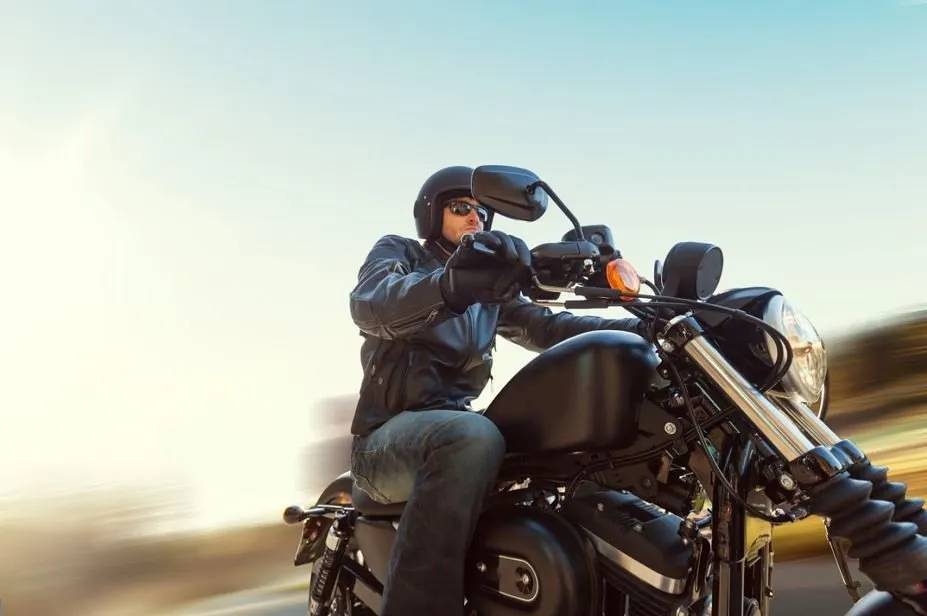Motorcycle accidents are generally considered the worst type of crashes since motorcycles can be driven at high speeds and do not offer their riders much protection. Researchers have noted that 98% result in injuries. Many accidents end in serious injury or death. The National Highway Traffic Safety Administration, the division of the U.S. Department of Transportation tasked with road safety, has noted that a motorcycle rider is 8 times more likely to be injured and 37 times more likely to die in an accident than the occupant of a car in an automobile accident. Studies have shown that losses for motorcycle accidents can be 4 to 12 times higher than losses from other vehicular accidents. The physical and financial damage from a motorcycle accident can be extreme and it may take a long time to recover from injuries sustained.
In the past decade, accident deaths have increased, due to more motorcycles being purchased each year, not only by younger riders who have less experience riding but, increasingly, by riders over 40 who have slower reaction times. Also, there is more congestion on our streets and drivers travel at faster speeds.
Arizona Motorcycle Accident Statistics
- In 2017, 161 motorcyclists were killed in accidents.
- In 2017 motorcycle fatalities accounted for 18% of all motor vehicle deaths, even though motorcycles account for far less miles driven than automobiles.
- In 2017 March was the peak month for motor vehicle crashes.
- In 2017 Friday was the peak day for motor vehicle crashes.
- In 2017 Saturday was the peak day for fatal motor vehicle crashes.
- In 2017 the most common type of motorcycle crash was a left turn. A close second was the motorcyclist being rear ended.
- In 2017 most motorcycle accident occurred to those aged 25-34.30% of all motorcycle injuries are to the legs and feet. 22% of injuries are to the head and neck. Broken bones, scars and head injuries are common in a motorcycle accident. Serious injuries can be limited if the rider uses quality safety equipment. For instance, a helmet should cover the entire face, fit well, and be less than 5 years old. The glue that holds the protective material together deteriorates over time and a poorly-fitting helmet may come apart during an accident.
Why Motorcycle Accidents Happen
- Motorcycle accidents often occur when drivers in other vehicles are not aware of a motorcycle rider’s speed or closeness to their car or truck. Researchers at Texas Tech University found that the human brain has a harder time accurately perceiving small objects that are close by than larger objects that are farther away. The implication for motorcycle riders is that drivers in cars and trucks may have a hard time accurately knowing how close motorcyclists are to their vehicles and may be unable to judge the motorcyclist’s speed, increasing the chance of an accident.
- Driver Error. The most common motorcycle accident is when a car turns in front of a motorcycle, hits the motorcyclist while changing lanes, or runs into the motorcycle at a stop light. Common reasons for the driver not seeing the motorcyclist are: inattention, distractions, blind spots and that the driver is looking for cars rather than motorcycles. Motorcycles can easily fit into blind spots and drivers looking for cars aren’t psychologically programmed to see motorcycles. Distracted drivers, those texting or talking on the phone are more likely to cause a motorcycle accident.
- Dangerous Road Conditions. Fortunately, motorcycle technology has developed over the years to improve rider safety. Many motorcycles now come equipped with anti-lock braking systems and traction control. These developments still may not eliminate all dangers. Poorly maintained roads, liquids that are leaked or spilled on surfaces, or improperly engineered streets and highways can lead to accidents and injuries.
- Faulty Equipment. Accidents can happen even when no driver is at fault. Vehicle defects that slip past the manufacturer can cause an accident or faulty safety equipment may fail to protect the driver or passenger the way it should. When products fail and cause harm that should have been avoided, a skilled lawyer may find it necessary to pursue a products liability case.
Determining Who is Responsible for a Motorcycle Accident
- Drivers, Owners, and Employers. Drivers and owners of vehicles who cause an accident are responsible for the injuries the wreck inflicts. But responsibility does not end there. If your accident was caused by a driver who was on the job or driving a company car or truck, you would be able to pursue compensation not just against the driver, but his or her employer as well.
- Governmental Entities. When a defective design, construction, or maintenance of public roadways results in a dangerous condition, the governmental entity that is responsible for those roadways bears blame for your motorcycle accident. Claims against governmental entities, however, have strict filing deadlines, usually as short as six months. It is imperative that you consult with a lawyer right away so that you don’t lose your right to your claim.
- Manufacturers. If a defective motorcycle design, manufacture, or assembly contributed to the crash, the maker of the motorcycle would be a target defendant in your case. If there is a failure in safety gear, like a helmet that didn’t protect the way it was supposed to, then the manufacturer and seller would be further sources of recovery.

